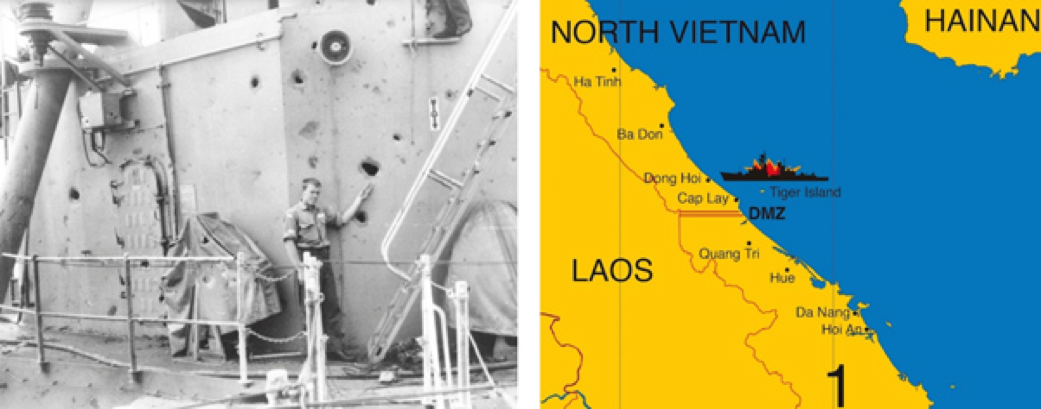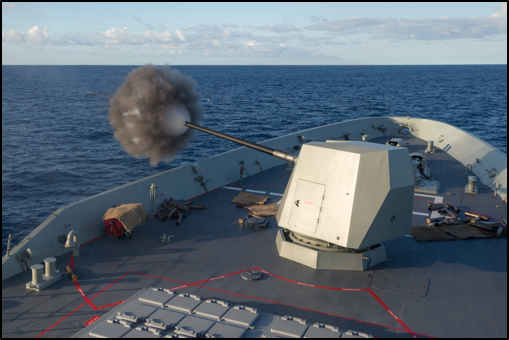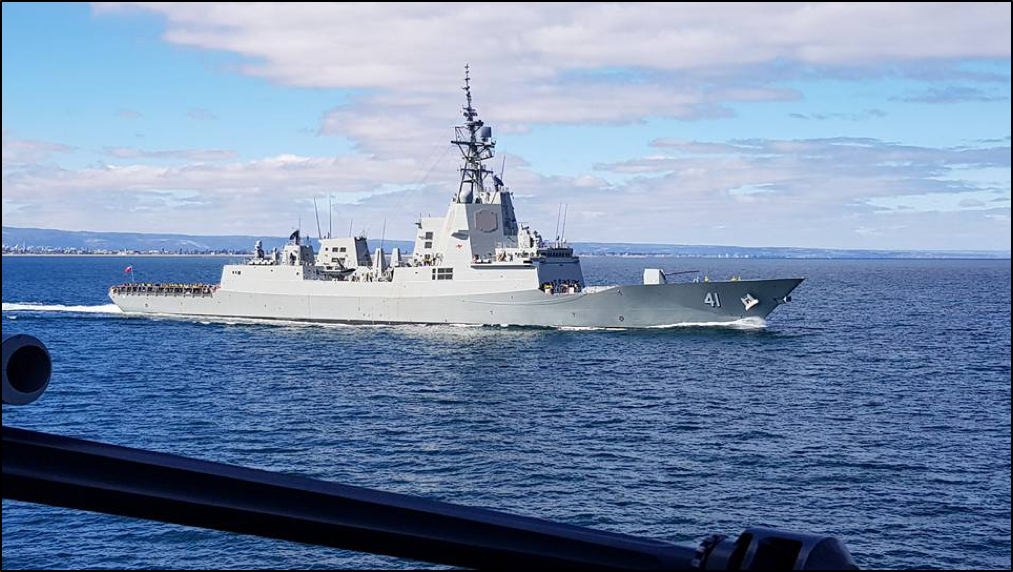Several events concerning the three HMA Ships Hobart come together with a memorial and commemoration service at the Garden Island Chapel on Sunday 22nd July starting at 10.00am.
HMAS Hobart I
On 20 July 1943, Hobart I was torpedoed by a Japanese submarine whilst enroute to Espiritu Santo, Vanuatu, as part of Task Force 74. The torpedo struck aft on the port side causing considerable damage in the vicinity of the wardroom. Thirteen officers and sailors were killed and another seven injured. She made it to Espiritu Santo under her own power the following day where she underwent temporary repairs.

HMAS Hobart II
Then on 17 June 1968, Hobart II was in the vicinity of Tiger Island off Vietnam when she detected an aircraft approaching her from the vicinity of Cap Lay. Although the aircraft was evaluated as friendly – indeed later identified as a US 7th Air Force jet, it continued to close and fired a missile that struck Hobart amidships on her starboard side. The warhead passed through the main deck, seriously damaging several compartments, while the body of the missile passed through the outer skin of the after funnel before ending up in the forward funnel. In its passage the missile killed one sailor and wounded two others.
As Hobart’s crew raced to action stations a second and third missile hit the ship. The second missile entered the transom without detonating, destroying the gunner’s store before breaking up in the engineer’s workshop and penetrating the after seaman’s mess. The third missile hit the ship in the same area as the first, passing through one of the ship’s fan spaces, the missile director equipment room and Tartar checkout room. This missile killed a second sailor, wounding several others. At 8000 yards the crew of Hobart’s forward gun engaged the aggressor, firing five rounds in local control, causing it to turn away.

HMAS Hobart III
More recently, on Tuesday 19th June, a group of some 40 members of the NHS visited Hobart III at Garden Island. The ship was undergoing an AMP with parts of the ship not accessible due to dockyard actions, but we were all most impressed by the capabilities and conditions aboard the newest addition to the RAN. A briefing by the Captain in the wardroom was followed by a tour of the foc’sle with gun and missile silos, the bridge, Captain’s quarters and Central Control Centre. Our tour guides were very forthcoming about the ship’s capabilities, results of trials have exceeded expectations, and the enthusiasm, professionalism and pride in their ship was palpable.


The Spanish build good ships and the excellent sea-keeping qualities have been tested and appreciated in the Bight. The Gas Turbine/Diesel propulsion system provides long range on Diesel as well as an immediate high speed capability on turbine while bow thrusters allow berthing and departures without tugs. Based on the Navantia designed F100 frigate and fitted with the Aegis Combat System, the Hobart Class will provide air defence for accompanying ships in addition to land forces and infrastructure in coastal areas, and for self-protection against missiles and aircraft. The Aegis Combat System incorporating the state-of-the-art phased array radar, AN/SPY 1D(V), in combination with the SM-2 missile, provides an advanced air defence system capable of engaging enemy aircraft and missiles at ranges in excess of 150km. This capability is enhanced by the ability to engage enemy aircraft based on data transmitted by other Aegis fitted ships, successfully tested recently with Brisbane as she was undergoing builders trials.

The Aegis weapon system has been designed as a total combat management system from detection to engagement. The centralised, automated, command-and-control weapons control enables multi-mission capability, network centric warfare, cooperative engagement capability and growth to SM-6 and future capabilities.
In addition to their air defence capability, the Hobart Class will carry a helicopter for surveillance and response to support key warfare areas – successful trails having already been carried out. The surface warfare function will include long range anti-ship missiles and a naval gun capable of firing extended range munitions in support of land forces. These ships are also equipped with modern sonar systems, decoys, surface-launched torpedoes and an array of effective close-in defensive weapons.
The extensive EW sensors and passive counter-measures enable these ships to continue effective operations in a hostile EW environment, while internally, reliance on computers and other technological advances with built-in redundancies assist the crew both in peacetime and operational activities. These capabilities ensure that the Hobart Class DDGs have the layered defensive and offensive capability required to counter conventional and asymmetric threats.




